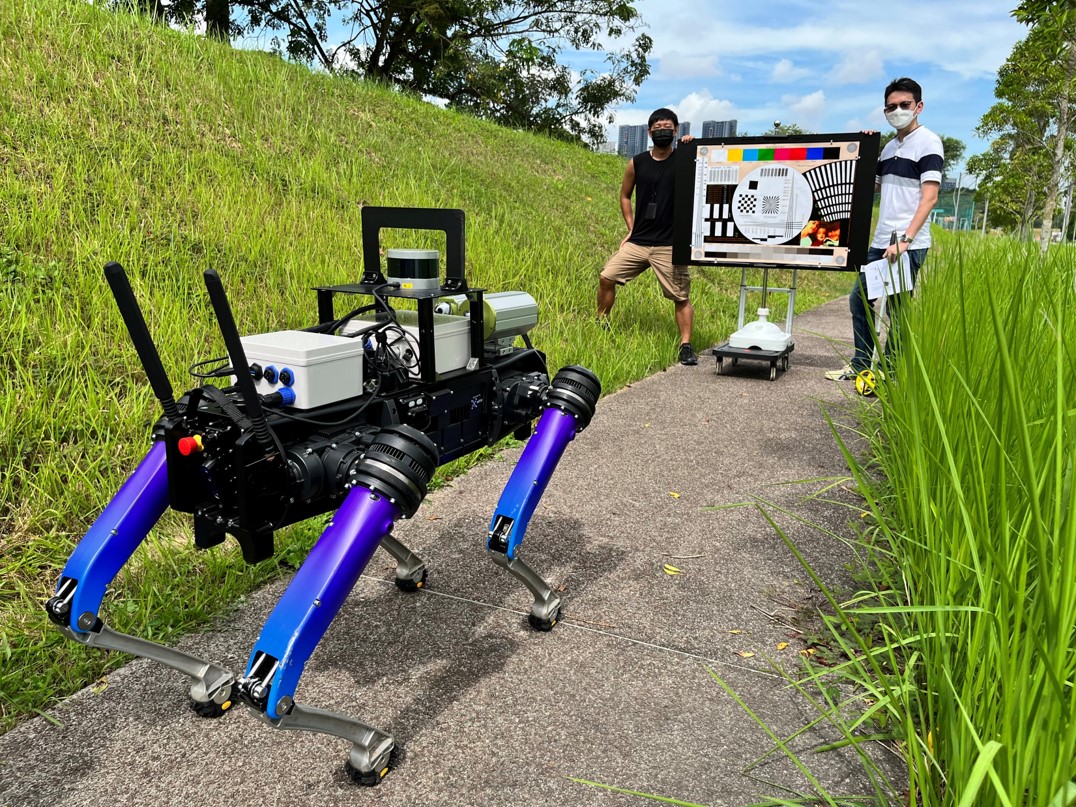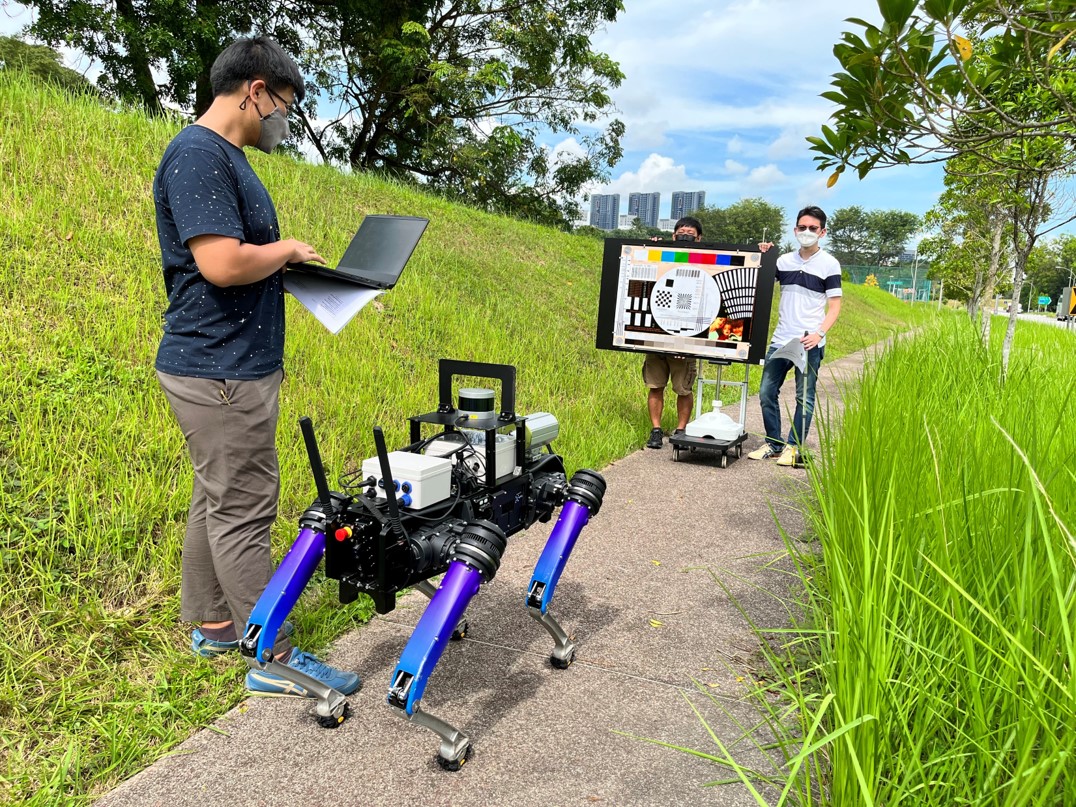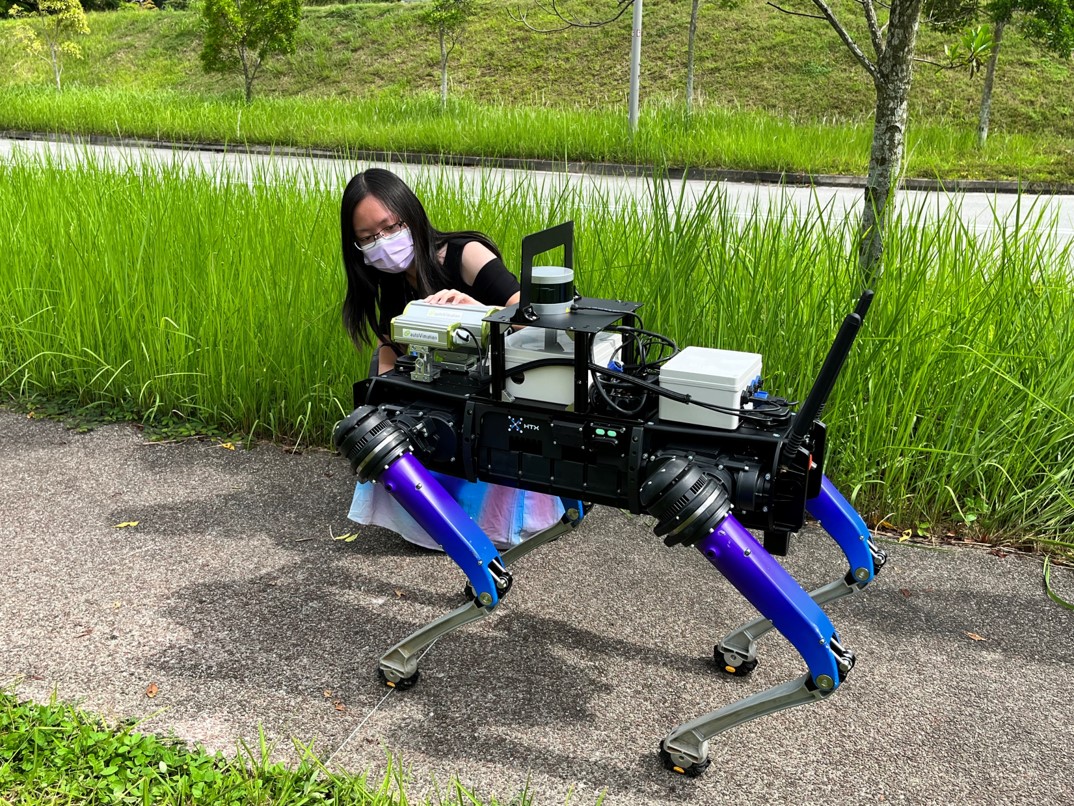
It is a sweltering afternoon at one-north close to HTX’s headquarters, and Rover-X, a four-legged robotic dog, is not breaking a sweat as it takes an “eyesight test."
Engineers from HTX’s Robotics, Automation and Unmanned Systems (RAUS) and Sense-making & Surveillance Centres of Expertise (CoE) are conducting a trial to test Rover-X’s image quality capabilities. A resolution chart – similar to the eye chart that we use to test our vision – is used to assess the performance of Rover-X’s camera to resolve and see fine details at different distances and zoom levels.

(From left to right) Engineers Alvin Wong, Goh Boon Kiat and Chin Zhihao conducting a trial with Rover-X (Photo: HTX)
The current trial includes the testing of Rover-X’s video analytics (VA) capabilities. VA on a robotic platform that is constantly moving, such as Rover-X, is no small matter.
Most VA solutions today have been developed for use on fixed cameras. They are mounted at height looking down, and in most cases do not move. The algorithms can thus be trained for similar camera angles and perspectives. For VA to work on a moving robot, it is a different ball game.
“It is more challenging for VA to work on a robot because the field of view changes as it moves and the height of the platform varies with each step the robot takes,” Benjamin Lee, Deputy Director (Sensors and Sense-making), Sense-making & Surveillance CoE explains. “The videos are also subject to a higher degree of motion blur because the environment is very dynamic compared to a fixed camera.”
“We are doing multiple tests to verify the performance of Rover-X’s VA capabilities so as to ascertain its accuracy and false alarm rates in certain conditions,” Benjamin said.
Jointly developed by HTX in collaboration with Klass Engineering and Solutions, Ghost Robotics and A*STAR’s Institute for Infocomm Research (I2R), Rover-X can be used to support missions that are highly risky and support frontline officers in their security patrols. Its special capabilities include sensors and operating modes that enable it to navigate autonomously with minimal human intervention as well as video analytics that aids in early threat detection.
Read related article: Taking strides forward to deliver the Home Team robotics strategy

Aw Rui Huan, Engineer (Ground Systems), RAUS CoE, examining Rover-X (Photo: HTX)

![[FEATURED NEWS] Counting on Robots in times like these](/Cwp/assets/htx/images/listing-card-placeholder.png)